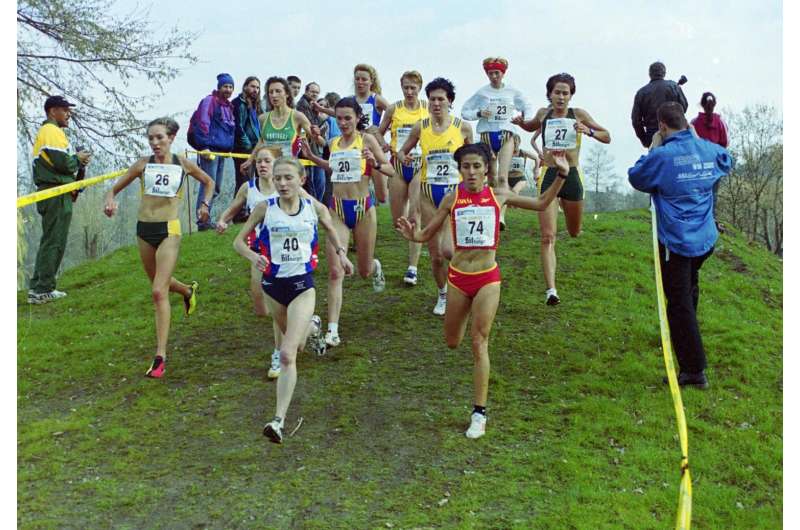Human and avian running on uneven ground

Together with colleagues, Dr Roy Müller from the Friedrich Schiller University Jena (Germany) has published a review article in the current issue of the Journal of the Royal Society Interface analyzing human and avian locomotion on uneven ground.
"Even though their adaptation mechanisms and strategies developed completely independently, they do so in very similar ways", says Dr Müller.
Running on uneven ground, people and animals step on rocks or roots crossing the path, or encounter small hollows. This causes disruption to running rhythm. "Yet, even at a rather fast pace, situations like these usually do not make us lose our balance," says Dr. Müller. The reason: Bipedal runners—including humans—have various adaptation strategies stabilizing movement in their fast locomotion.
"In the course of evolution, bipedal locomotion in birds and humans has evolved independently," explains Müller. But similarities and differences in bipedal locomotion on uneven ground have so far not been scientifically researched, he says, explaining the approach of the recent publication. While Müller and his team at the Chair of Motion Science in Jena have collected extensive data on human locomotion over the past few years, British colleagues at the University of Cambridge and the Royal Veterinary College in London dispose of corresponding data on avian locomotion. "In our publication, we have now, for the first time, brought together these two sets of data."
According to the data, there are, indeed, differences in the motion patterns of humans and birds due to anatomical differences in the locomotor systems. The femur orientation in birds, for example, is nearly horizontal—in humans, it is vertically orientated. "These differences result in dissimilarities during locomotion—for example, in the angles at which our feet touch the ground," explains Müller. Yet, locomotion patterns of humans and birds can be described precisely using a simplifying mechanical model, the so called spring-mass model. It simplifies the leg to a single flexible spring that carries the body mass. The model allows scientists to directly compare data collected in running experiments.
Both humans and birds adapt their movements when running on uneven ground. "And even though their adaptation mechanisms and strategies developed completely independently, they do so in very similar ways," Müller says. If there is a small hollow in the ground, the runner retracts the swing leg during the late flight phase, leading to a steeper angle of the leg at ground contact. At the same time, the leg is 'lengthened' by keeping it straighter at touchdown. "Unlike birds, humans also use leg stiffness to adapt locomotion."
The authors stress that first and foremost, their findings are basic research. But in the long run, their findings and the knowledge of locomotor strategies in bipeds can also be of practical use—to improve locomotion of humanoid robots, for example.
More information: R. Müller et al. Human and avian running on uneven ground: a model-based comparison, Journal of The Royal Society Interface (2016). DOI: 10.1098/rsif.2016.0529
Journal information: Journal of the Royal Society Interface
Provided by Friedrich Schiller University of Jena



















